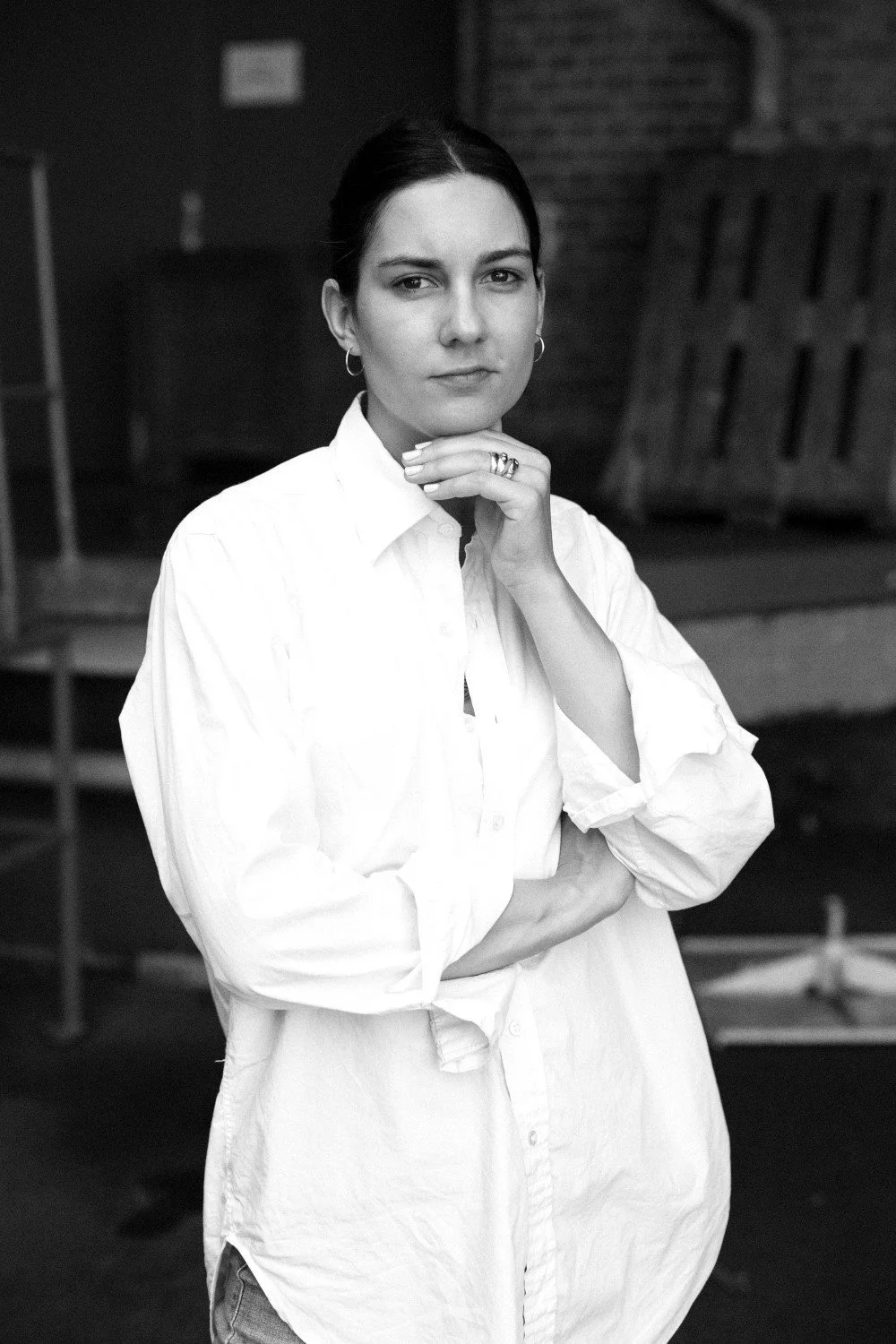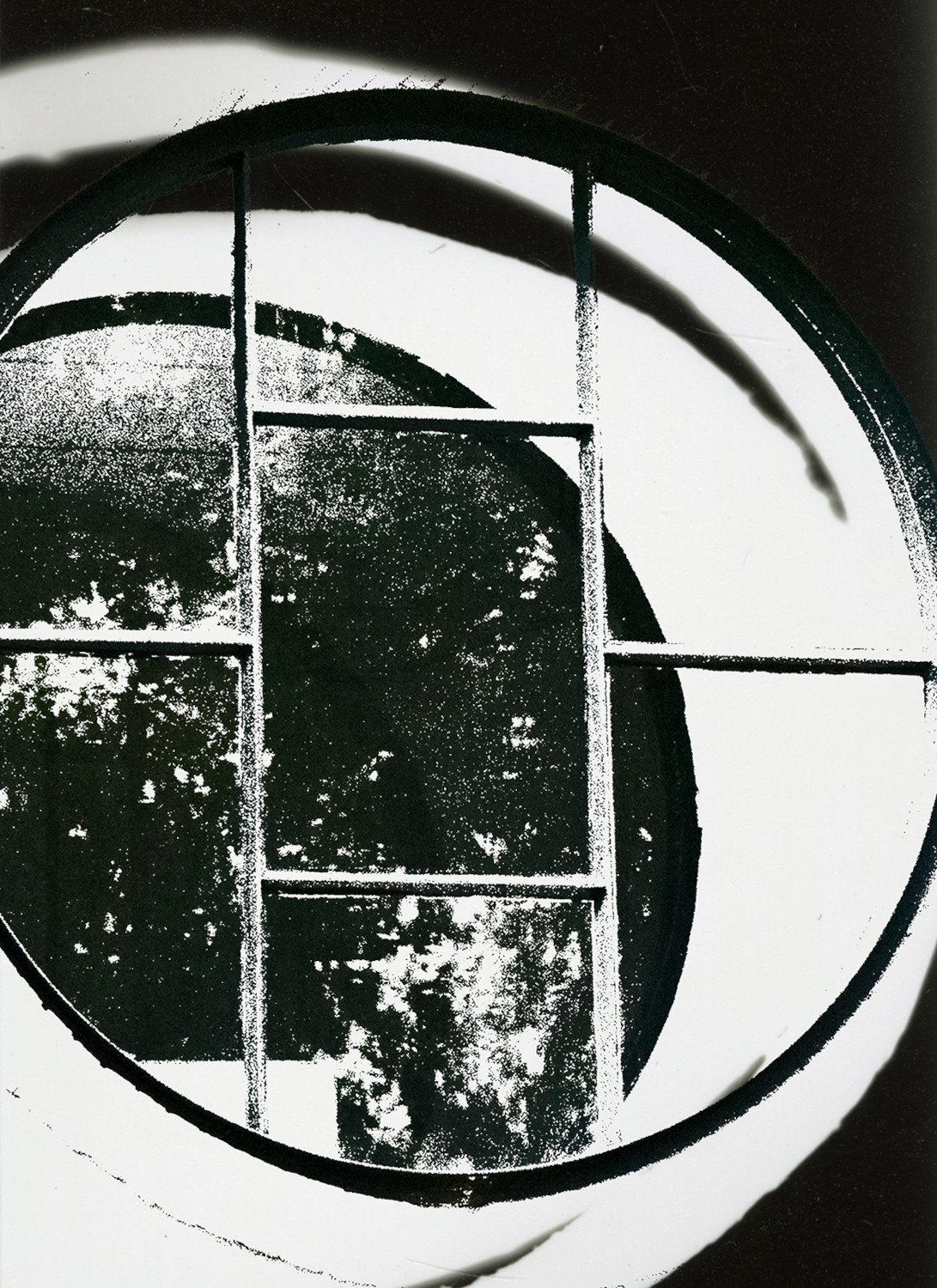10 Questions with Daria Lou Nakov
Daria Lou Nakov, born in Paris to a Slavic father and a French mother, is a French visual artist based in Berlin. Her work is at the crossroads between installation, photography, and video. She started her artistic studies in Paris and then went on to the Gerrit Rietveld Academie, where she first studied Architectural design, which is still very present in her visual language. She graduated from the Photography department of the Gerrit Rietveld Academie with a BA in Fine Arts and Design in 2021.
She sees photography as a way to create and compose images and not simply capture the world around her. In a society so fueled with images, she creates installation spaces and worlds through surrealistic images; to question our relation to our hyperrealistic image-based world.
She has participated in multiple group exhibitions in Amsterdam, Paris, and Berlin since 2017, such as The Uncut festival at The Stedelijk Museum Amsterdam in march 2018 & 2019, and 'Auspuff' at Looiergracht Gallery Amsterdam in May 2019, or the Utopias exhibition in Paris in November 2019. More recently, she has been part of « The Young Sprouts Talent » exhibition at SBK gallery in Amsterdam and the « Physical Feelings » exhibition part of Lichtkunstfest at the Milchhof Pavilion organized by Artspring Berlin.
Daria Lou Nakov - Portrait © Maxi Pfeil / Taken in front of the artist’s atelier in Berlin
ARTIST STATEMENT
In a world where everyone has a «camera» in their pockets, she questions our role and relation to images.
Contrary to what is mostly seen as a photographer's work, she doesn't capture places, people, or memories; she creates them.
With this, she likes to push the borders of realism within photography, to question our need for hyperrealism in images, which has defined our day-to-day life, by making abstract images of spaces and not photographs of places.
In the form of performative photography, her work questions our physical connection to the visual world. How can we experience an image and not observe it?
Her books, projections, installations, and other artistic formats place the "viewer" in a perspective of discovery of space through images. And not a reflexive reading, questioning both his role as a viewer and his relationship to the visual world in space.
Her creative process has within it multiple mediums of experimentation and creation—a myriad of testing, questioning, and prototyping, which sometimes are the work itself.
Her works are theaters, just as her compositions (images) are stagings. Every city, every place she is in is the subject/theatre of her installations, in inspiration and as a living character. Both real and imaginary, her installations and compositions question the part and importance of reality in an image.
Moving window © Daria Lou Nakov
Get your limited edition copy now
INTERVIEW
First of all, introduce yourself to our readers. Who are you, and how did you start experimenting with images?
My name is Daria Lou Nakov. I am a french visual artist, born to a French mother and Slavic father. I am, since a very young age, driven by creation. I left France in 2015, motivated by the absolute conviction of the importance of sharing and exchanging artistic and cultural visions for my creative process. And also pushed by the desire to have a more conceptual education (at The Gerrit Rietveld Academie), focused on experimentation and research, which is the fundament of my artistic practice.
I really started experimenting with images through my interior architecture studies in 2017. There, I made the first project questioning and reflecting on the link between spaces and surfaces and how to translate spaces onto surfaces and vice versa.
I was interested in creating images with objects of small-scaled spaces to create immaterial spaces through images. From there followed all the other projects; all my projects follow one another, derive from one another, as well as the spaces and cities where I am.
How would you define yourself as an artist?
I like to define myself as a performative visual artist working with photography, not in the sense that I act my images, but more in the sense that my pieces are made to be experienced. Through the creation of images, I question the role of viewers and put them in as performers of the work.
In the realm of performative photography, my work questions our physical connection to the visual world. How can we experience an image and not observe it?
My books, projections, installations, and other artistic formats place the "regardeur" (as M.Duchamp called them) in a perspective of discovery and experience of space through images and not of reflexive reading. I question both their role as viewers and our relationship to the visual world in space.
Moving window © Daria Lou Nakov
Can you tell us about the process of creating your work? What is your artistic routine when working?
At first, comes a lot of documenting, spaces and ideas, exploring a place, a space, a city. Then, through this essential process comes new questioning and ideas in the ways to invent spaces and images.
Materials are an essential part of my work. These vary according to the projects. Each project starts with creating a sculpture/object (of metal, cardboard, stone, and others). This is one of the most, if not the most important part of my creative process. Working with my hands inspires me and frees me from the torments of my thoughts and concepts. These sculptures are then translated into images, which become the canvas for the rest of the project. The materiality comes back later in the conception of my installations, images, books, and other artistic formats.
My work is based on analog and digital technics to make concretely coexist and conceptually material and immaterial spaces and images.
How much planning goes into each series of works?
My works have a lot of unexpected within them. Of course, some stages need and have planning, such as the installation phase, how to adapt and create a spatial installation according to a specific space, and not simply put my work in a gallery or place. Since my work is about spaces and how we see and interpret them, the installation part is crucial for interpreting and understanding my concepts and ideas. For this, a lot of tryouts come into play to enable thoughtful planning. The simplest ideas are usually the ones that need the most work planning and trials to be the clearest possible for the viewer, especially with abstract and conceptual ideas.
You have a very descriptive series of photographs and more abstract ones. Why do you use this visual language? And how has it evolved over the years?
Because I believe they need one another. All of my works have realism and abstraction, whether they are visuals very descriptive, such as the project «Men and Me» or visual abstract «A New Leap». In «Men and Me» the visual is clear, and the concept is abstract. For «A new leap» it is the opposite. I like to use contradiction or opposite, if you will, because they create confusion and questioning. I like that my work raises more questions, rather than answering a few. My work is in constant evolution, and each project refers in some way to the previous one and the world around me. Some themes are at the core of my work, like immaterial spaces and our physical perception of the visual world and through the evolution of each project, sometime it takes the form of more abstract language and others work with realism to connect to more abstract ideas. The language defines itself throughout the experimenting phase of the project, it isn't previously defined at the start of each project.
Moving window © Daria Lou Nakov
Moving window © Daria Lou Nakov
What do you hope that the public takes away from your work?
The public is an important part of my works, it is the last element because it brings it to life. I like it if the viewer gets out of my works more questions. As I mentioned before the viewer/public is a performer of my work, by that he brings it to life by the way he experiences it. The amount of time spend there, how they position themselves in the work, how they interact with one another voluntarily or not. I like to think that confusion brings beauty, so even if not everyone understands their roles as performers, I hope they take with them the beauty, confusion and questioning. The ideal is if it makes them rethink about it later on, then it will have been a success, but in the moment beauty is one of the entry points from which to access the questioning and more abstract ideas, so if they only take the beauty with them maybe it will be a start for reflection later on.
Do you have any artists or role models that influence and inspire your work?
There are many artists that I admire, a couple have left an important mark on me and express themes that stayed and speak to me, such as Christo and Jeanne-Claude or Gordon Matta-Clark. In their works they both use large scale installation to create images in the broad sense of what an image can be, meaning a visual memory. In a very different way they both create experiences. Through works with huge aesthetic qualities they give an opening into more complex ideas and the essence of their concepts. And I am of course very inspired by my peers, looking at artworks is part of the practice especially from artist from different fields and views, it helps to enrich a critical thinking.
Do you find that the shift to digital exhibitions and art fairs has helped you promote your work?
It is undeniably a very valuable tool and important shift especially during the pandemic. However, it has left me a bit skeptical as to what it means for the physicality of my works. Nevertheless it is an interesting way to rethink the role of digitalizing, and what part it plays in the perception and experience of artworks.
Moving window © Daria Lou Nakov
What do you think about the art community and market?
The art market as the word implies is a market and always has been, but I do believe that there is a growth of the business value of art which is a shame. For some art has become a commodity but at the same time the positive side of it is the growing democratization of art, and the solidarity it brings within the art community. I believe being an artist is so many different jobs at once and the art market is one of them, learning to navigate it is a crucial part. To create is arduous and rewarding in a way the art market is similar a never-ending battle. One of the exciting things as a young artist is to think with pears of new ways of showing works and overcoming the market.
Finally, any projects you are looking forward to for this year?
I am currently working on a new project that I am excited about. I am currently showing works as part of the « Sprouts II » exhibition until September 2022 at Arti Amicitae in Amsterdam. I feel like after two years of Covid, the art world is finally starting up fully again so I am looking forward for what is next to come, And to see what will be next (residencies and such).























